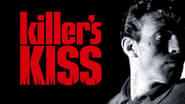tomas-842-817258
It's astonishing to know that Kubrick went from this amateurish freshman effort - bested by many film school projects - to become the director of a major Hollywood blockbuster (Spartacus) in only two films; The Killing and Paths of Glory. That, to me, is the only reason to watch this Killer's Kiss: to understand the breadth of Kubrick's genius.
grantss
A washed-up boxer, Davey Gordon, falls in love with his neighbour, Gloria Price, a dancer. They plan to leave town but unfortunately, her boss is infatuated with her and is determined that she not leave. He is not above using violence to achieve his aims and Gloria and Davey's lives are soon in danger.Stanley Kubrick's second movie (the first being the unacclaimed "Fear and Desire" of 1953). Written, directed, produced and edited by him, this is a movie of a man still learning the ropes. It's also the movie of a man without fame enough to get a decent budget. The fact that he has so many credits in this movie, especially producer, shows how he had to make do. The lack of a name actor/actress in the cast also shows this, and, to an extent, hurts the movie.Plot is decent, though quite basic. Seems pretty conventional but Kubrick ramps up the action and suspense towards the end, making it a fairly rewarding story in the end. Performances are the weakest aspect, largely due, as mentioned, to the no-name actors. Some pretty hammy performances, though, thankfully, the dialogue is quite limited.What prevents this from being just your average B-grade drama, and probably what ensured that Kubrick still had a career in film, is the cinematography. This is where you can see Kubrick's genius for film (his background was in photography, so not a surprise). Kubrick's camera work carries the movie.Was torn between giving a 6 or a 7. Went with a 7 in the end - the last few scenes kicked it up a notch.
Dario Vaccaro
After "Fear and Desire", Kubrick managed to pull off a more professional looking film, although also a less intriguing one. If FaD was poorly written, K'sK stands as a good improvement over it, with leaner lines but still stained by too long expository monologues, especially the less-than-relevant one about Gloria's relatives, which feels more like a showcase of Kubrick's wife as a dancer than a really significant part of the film. While FaD played a lot with the genre it was put in, though, and created an unsettling atmosphere with the doubles of the protagonists, K'sK agrees more to the dictats of the genre, only seldom driving away from it with some romance drama and continuing Kubrick's obsession for the bewilderment of his characters. The cinematography and staging are the true shiners of the film, with amazing shots that are statements for the masterpieces to come: I especially liked the nightmare scene, which clearly relates to the journey through space and time made by Bowman in "2001" (their names, Davey and David, are also very similar...). Acting, like in the previous film, is nothing worth noting, except maybe the fight in the mannequin factory, which was a good showcase of energy and rage by the two mains, especially for a low-budget film. The happy ending got me unprepared for, as I know Kubrick and his love for generating mixed feelings in his viewers, but I later learned that it was imposed by the producers for a lot of money, so I can see now why it is so.All in all, being this his second film and with a low budget, it's still an interesting piece of history in the greatest director of all time's career.
George Roots (GeorgeRoots)
The techniques of "Killers Kiss", shows a lot more familiarity when it comes to your expectations of a Kubrick picture. A young boxer towards the end of his career, eventually begins to grow closer to a woman who lives in the apartment blocks next to his. A relationship then begins as the two grow closer, as they also plan to collect money from her violent employer. Does things ever go smoothly in these scenarios? I found myself enjoying this work much more than Kubrick's earlier effort "Fear And Desire" (1953), which Kubrick himself tried to remove from circulation. Shot when he was 26 years old, it shows a fantastic use of light when it came to emphasis and also a lot more confidence in narrative and framing. There is a long dance sequence where the Ballerina is played by Kubrick's second wife (Ruth Sobotka), and the sound was post dubbed as the microphone would interfere with the lighting system.Final Verdict: Unfortunately I can't say much about it compared to his previous and later works, as well as only talk mindless movie trivia. But it is worth your time if you can find it, it is usually boxed as an extra in the Home release of Kubrick's next picture "The Killing" (1960). 6/10.





